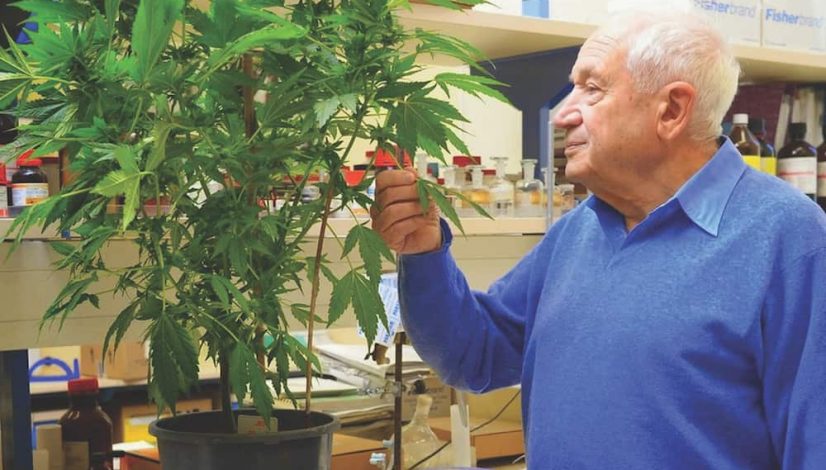The Truth About Terps
In the Beginning
In 1964, two young scientists, Dr. Raphael Mechoulam and Dr. Yechiel Gaoni, were the first to isolate and map the molecular structure of THC. This cannabinoid is, of course, the primary and only psychoactive chemical compound found in cannabis.
Late in 2010, this author had the pleasure and privilege to interview Dr. Mechoulam at his laboratory at the Hebrew University in Jerusalem. During that interview, I asked him a simple question: Why cannabis? And his answer was simple as well. In short, Dr. Mechoulam was interested in “natural products” that could elicit a therapeutic response within the human body. And while other plants, such as coca and poppy, had already been refined for medical purposes—cocaine in 1860 and morphine in 1803, the latter being believed to be the first isolation and extraction of an active compound from a plant—there was not an overabundance of options left. So “Why not cannabis?” Dr. Mechoulam asked in response.

Dr. Raphael Mechoulam/ High Times Archive
Less than a year after my interview with Dr. Mechoulam, another prominent scientist, Dr. Ethan Russo, published an equally important piece of research in the British Journal of Pharmacology, “Taming THC: Potential cannabis synergy and phytocannabinoid-terpenoid entourage effects.” Dr. Russo is a board-certified neurologist, former senior medical advisor to GW Pharmaceuticals and a widely published author in many scientific journals, books, and periodicals (including our very own High Times).
Building off of the previous work and ideology of Mechoulam and Gaoni, Dr. Russo introduced the next steps in our collective understanding of the effects and benefits of marijuana, this time focusing not just on cannabinoids, but also on the terpenoid content present in the plant. Both the isolated effects of other cannabinoids (such as CBD, CBG, THCV, etc.) and terpenoids as well as the sum of all parts when taken together, he argued, represented “another echelon of phytotherapeutic agents.”
What (Exactly) Are Terps?
Before we get back to Dr. Russo’s work and attempt to more fully understand the interactions between terpenes and cannabinoids (i.e., the entourage effect), we first need to know just what exactly “terps” are. Technically speaking, terpenes are a large and very diverse class of organic compounds (hydrocarbons, to be exact) that are produced by a wide variety of plants, including cannabis.
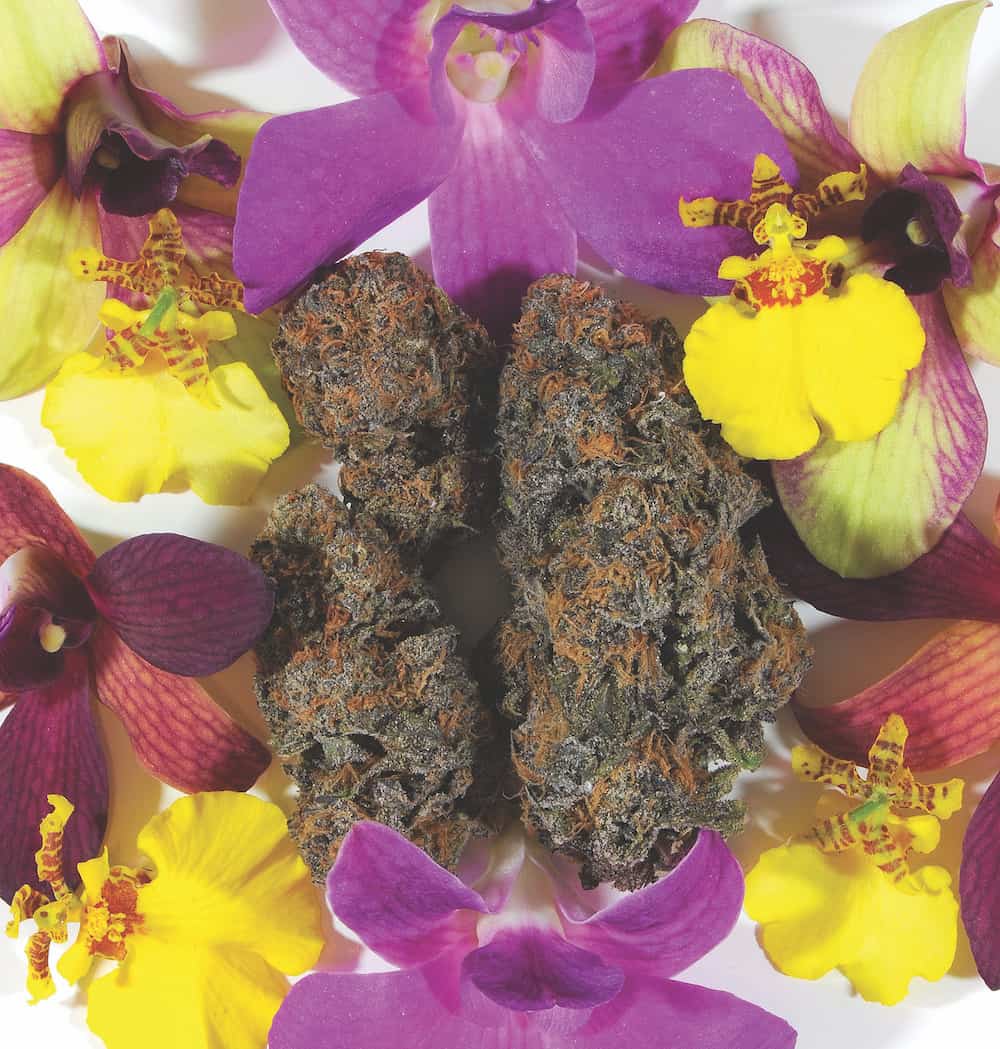
Grandaddy Purps: high in linalool and caryophyllene; High Times Archive, South Bay Ray
Some authors use the term “terpene” as a broader, catchall phrase that includes the subgroup known as “terpenoids.” Terpenoids can be thought of as modified terpenes, although they are very similar in most aspects aside from molecular structure. Terpenoids are terpenes that have been chemically altered, usually in the form of a moved or lost methyl group (one carbon plus three hydrogen atoms, or CH3). More important, terpenoids are also terpenes that have become denatured by oxidation, such as during the drying and curing of buds, making “terpenoid” a more accurate term when discussing strains that are ready for smoking, whereas “terpene” is more accurately used when discussing live plants (or fresh frozen plants, for extraction purposes).
A much simpler way to look at terps is that they are a plant’s “essential oils,” or the primary building blocks of any plant resin, and they are largely responsible for the scents, flavors and colors of plants. There are over 200 known terpenes in cannabis and, by comparison, just over half as many known plant cannabinoids (113), which are 21-carbon-atom molecules found only in cannabis and are completely odorless. And while Dr. Russo’s research strongly suggests that terpenes can contribute to the overall effects of cannabis, either singularly or via the total compounded effects of all cannabinoids and terpenes, there are no known psychoactive effects from individual terpenes.
It is also worth noting that terpenes are created through the biosynthesis of isoprene units, which are carbon and hydrogen building blocks (C5H8) for terpenes. This is important because it leads to that long and diverse list of organic compounds that encompass what a terpene can be. Adding a prefix to the name indicates the number of isoprene units needed to make that type of terpene, because for each single terpene involved there are two isoprene units needed.
For example, when you see the term monoterpene (“mono” meaning one), you know there are two isoprene units involved. Similarly, sesquiterpenes (“sesqui” meaning one and a half) indicates there are three isoprene units, and diterpenes (“di” meaning two) indicates there are four isoprene units, and so on. The list continues up to tetraterpenes, meaning eight isoprene units. After that, the terminology is generic, with polyterpenes indicating many isoprene units (i.e., more than eight). Just like terpenes, terpenoids can also be classified according to the number of isoprene units used. This is important because this is how scientists are able to identify and elucidate individual terpenes or terpenoids within a plant sample.
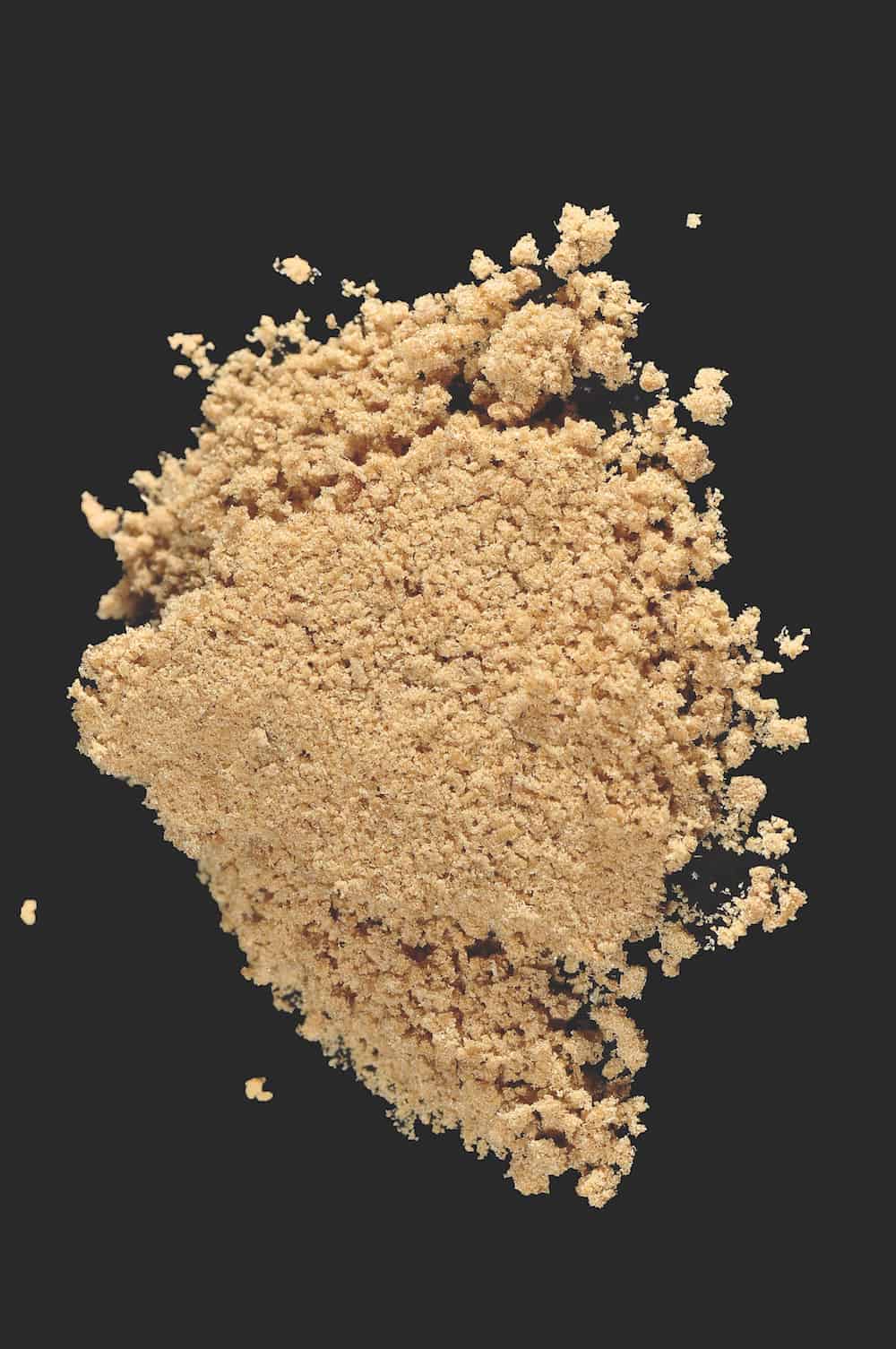
Concentrated trichomes (hash) was used by Mechoulam to first isolate THC; High Times Archive
Lastly, terpenes, like cannabinoids, are synthesized in cannabis inside secretory cells that exist within the plant trichomes, which cover buds and leaves. Trichomes are most concentrated on unfertilized female flowers during peak flowering—usually around the six- or seven-week mark, just as trichomes begin to turn amber in color. Being created within the same physiological structure is important because it shows us that both cannabinoids and terpenes share a common denominator, or precursor, in their production: geranyl pyrophosphate. This could suggest common receptor potential within the human body for both cannabinoids and terpenes, a basis for the research of Dr. Russo.
The Russo Paper
By the time Dr. Russo took up his cause to explore the potential synergetic effects of cannabis terpenes alongside cannabinoids, most of the prominent cannabinoids had already been elucidated, most of which by Dr. Mechoulam beginning with cannabidiol (CBD) in 1963 and then the seminal discovery of THC in 1964.

Dr. Ethan Russo; High Times Archive
But in 2011, Dr. Russo set out to investigate the effects, if any, of the various terpene profiles found in cannabis. Either alone, or in conjunction with one another, or in totality along with the cannabinoid profiles found in strains, Dr. Russo hypothesized that terpenes and flavonoids could elicit therapeutic responses within the human body and contribute to the effects of the cannabis plant. At the time, only one previously manufactured pharmaceutical, Sativex, had been synthetically derived from the plant’s chemical structures (THC and CBD in a 1:1 ratio), and since then, only one other, Marinol (synthetic THC), has come to market. While Sativex has seen moderate success and gained approved for use in over 30 countries, including the United States (where it is called Nabiximols), Marinol has not enjoyed as much success, though it was approved by the FDA in the United States. Still, neither Sativex or Marinol was able to reproduce the same medical and therapeutic effects that one receives when smoking the actual plant. The “full bouquet,” so to speak, of a particular strain offered something to patients that a single—or even a pair—of cannabinoids could not. Clearly, more research was needed, and Dr. Russo had an idea where to look.
In the past, various researchers had attempted to uncover the mysteries surrounding terpenes, emphasizing their pharmacological importance. Aromatherapy, a form of holistic healing, has been a popular method for healing for centuries. And in 1998, Dr. Mechoulam even co-authored a paper with Dr. Shimon Ben-Shabatt that suggested biological compounds created by the human body, known as endocannabinoids, might act in concert with other compounds to exert what they coined an “entourage effect.” Dr. Russo looked at this term and applied the same concept to his own research, except in his studies he substituted the endocannabinoids of the human body with the actual phytocannabinoids produced by the plant itself, leading to theories about the synergistic effects that terpenes and cannabinoids might have when combined with each other.
Related Science: The Entourage Effect
Around the same time that Russo was doing his research on possible entourage effects of the combination of terpenes and cannabinoids, a Swiss scientist, Dr. Jürg Gertsch, was researching similar theories. In 2008, three years prior to Dr. Russo’s paper, Dr. Gertsch documented that beta-caryophyllene, a primary terpene found in a majority of cannabis strains, had a certain affinity for binding to CB2 receptors in the human body. This discovery is of extreme importance as beta-caryophyllene is the only known terpenoid to directly activate a cannabinoid receptor, thereby proving that, at least on some level, terpenes do, in fact, play a role in the overall therapeutic effects of marijuana.
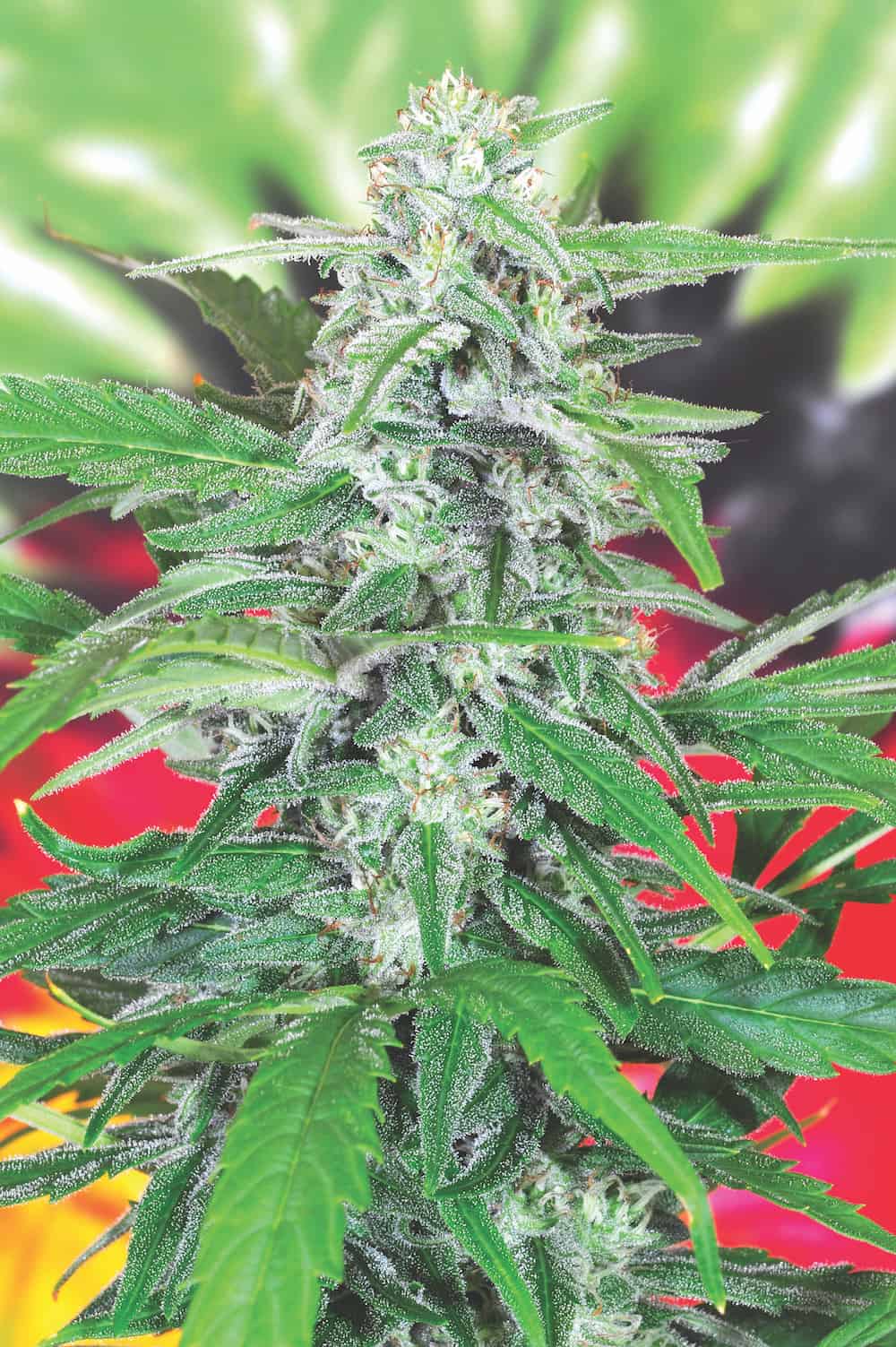
This Cheese x Skunk is loaded with glistening trichomes full of cannabinoids and terpenes; Courtesy of South Bay Ray, Stinkbud
Dr. Gertsch’s findings illustrated perfectly the theory of the entourage effect: Beta-caryophyllene, a terpene found in oregano, black pepper and other green, leafy vegetables that has been known to be good for treating certain ulcers, acting as a gastro-protector in herbal remedies, binds to CB receptors previously thought to be reserved strictly for cannabinoids and, subsequently, the body’s own endocannabinoids, providing new evidence that terpenes also play a direct role. So while this shows that the aromatherapy and herbal therapies of ancient cultures were certainly onto something, it also shows that when humans use cannabis there is a lot more going on than just reactions to THC and CBD. But what does this mean in terms of how cannabinoids such as these interact and work in concert with terpenes?
The 1998 paper by Dr. Ben-Shabatt (which Dr. Mechoulam contributed to) put this very question to test when researchers used lab mice in a study to determine if terpenes acted alone or in tandem with cannabinoids to elicit a stronger or overall different effect. In short, they found that the naturally occurring endocannabinoid known as 2-AG (2-arachidonoylglycerol), when administered with two related compounds (i.e., esters derived from carboxylic acids, which are molecularly similar to cannabinoids), would bind more readily at the cannabinoid receptors and exert a more pronounced behavioral effect on mice.
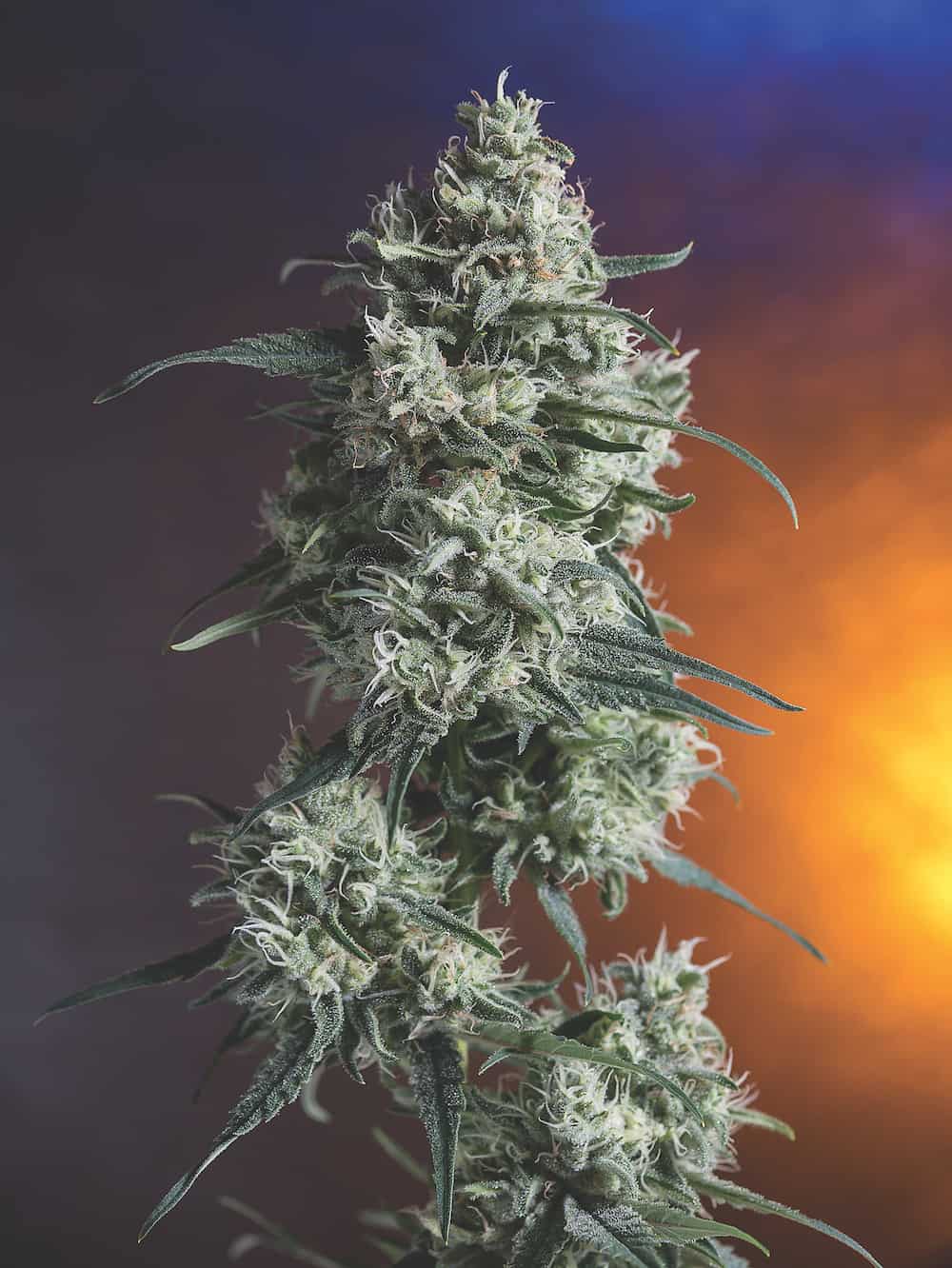
Durban Poison regularly tests as a top terpene strain at HT Cannabis Cups; Courtesy of South Bay Ray, Stinkbud
This was, to a certain extent, proof that endocannabinoids working at the CB-receptor level could have altered effectiveness when used in conjunction with other compounds. A few years later in 2001, Dr. Russo and Dr. John McPartland would publish a paper in the Journal of Cannabis Therapeutics, stating, “Good evidence shows that secondary compounds in cannabis may enhance the beneficial effects of THC and reduce THC-induced anxiety, cholinergic deficits, and immunosuppression.”
Dr. Mechoulam himself would later address these findings, saying, “Very seldom is the biological activity of the active constituent [analyzed] together with inactive ‘entourage’ compounds. Investigations of the effect of the active component in the presence of its ‘entourage’ [non-psychoactive] compounds may lead to results that differ from those observed with the active component only.” Essentially, Dr. Mechoulam was stating that while scientists previously were focused only on the active components of such natural products as cannabis, had they taken a broader approach and looked more holistically at the product, they might have found different outcomes when it comes to the effects elicited from said products.
These findings and statements by some of the most prominent and respected scientists in these fields were only the beginning in a wave of theory and research that is still ongoing. Of course, the biggest hindrance to much of this work is the fact that cannabis is still federally prohibited in the United States, which is why nearly all of the this referenced research was conducted overseas and is still slow in progress to this day. Still, the work that has been done to this point gives us a better understanding of why and how different strains of marijuana elicit different effects in the user. When you think about what makes a sativa a sativa or what makes an indica an indica, there clearly has to be more involved than just the THC or CBD levels. Sure, there are other cannabinoids in varying amounts as well, but this research shows us that terpenes, and even many flavonoids, have a significant role to play as well.
The Purity and Safety of Terpenes
Much has been made lately over the purity, quality and safety of terpenes and terpene-extraction processes. We already know that many vape-pen cartridges are adulterated with synthetic terpenes and artificial flavors. But are these terpenes safe to ingest and, more specifically, smoke? We know that terpenes share a chemical precursor with plant cannabinoids and that they are all flavor and fragrance components common to human diets. Thus, these terpenes and flavonoids have, for the most part, been designated as “generally recognized as safe” by the US Food and Drug Administration (FDA) and other regulatory agencies.
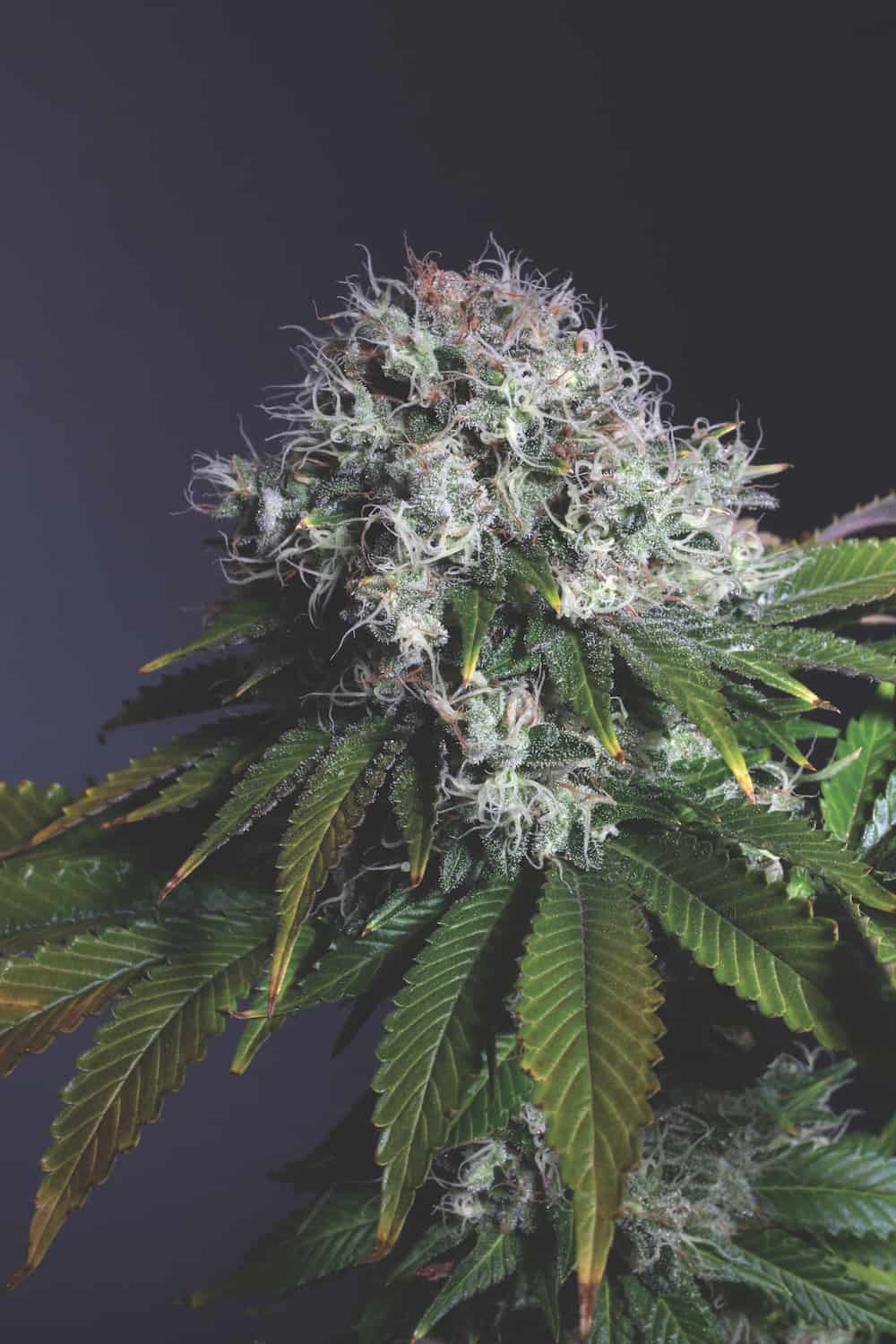
Chemdog: one of the highest known THC strains; Kent Sea (2), Justin Cannabis
Still, some folks out there also like to argue against the purity of terpene products currently on the market, claiming that some extraction methods—primarily through distillation—create hydrosols which, simply put, are terpenes that have been diluted by the addition of water from the distillation process. With similar therapeutic properties to essential oils, these “aromatic waters” are much less concentrated, which might not be the worst thing. Far worse than those creating hydrosols are the extract artists who knowingly and purposefully pollute dab products with non-cannabis-derived terpenes, synthetic terpenes and artificial flavors (the latter two being nonorganic). Call us purists over here at HT if you like, but we only allow cannabis-derived terps in our Cannabis Cup competitions when it comes to concentrates. And if those cannabis terpenes are derived from an organic, nonchemical solvent process like steam distillation, then all the better as a little H2O in the terps is really no big deal.
As Dr. Russo put it, “Terpenoids are quite potent and affect animal and human behavior when inhaled from ambient air at serum levels in the single digits ng·mL−1 (that’s nanograms per milliliter, where there are one million nanograms per mL)…and display unique therapeutic effects that may contribute meaningfully to the entourage effects of cannabis-based medicinal extracts.” Basically, Dr. Russo is telling us what we already know: that terps are extremely potent, even in the absolute tiniest of amounts. So, then, what’s the big gripe against hydrosols, you might ask?
Well, in this new age of legal marijuana industries—which are netting billions in revenues—there are dollars at stake and people have gone through painstaking efforts to develop (and protect) various techniques and methodologies for everything from cultivation to genetics, to recipes, to extraction methods. And when these modalities are challenged or threatened, people tend to defend their claims, no matter how nonsensical. So when it comes to terpenes—whether synthetic or organic, derived from cannabis or from other sources, or are just a bit watered-down—you can decide for yourself where your preferences lie. But at the end of the day, as long as these products are organic and derived solely from cannabis, they are safe and healthy to consume and bring the user immense amounts of fragrance and flavor.
Terps 101
Below is a list of the most predominant terpenes found in cannabis strains that have been lab-tested at our Cannabis Cups over the past five years. These terpenes are not only the most prevalent, but also the most active in terms of both isolated effects and overall entourage effects when combined with cannabinoids such as THC.
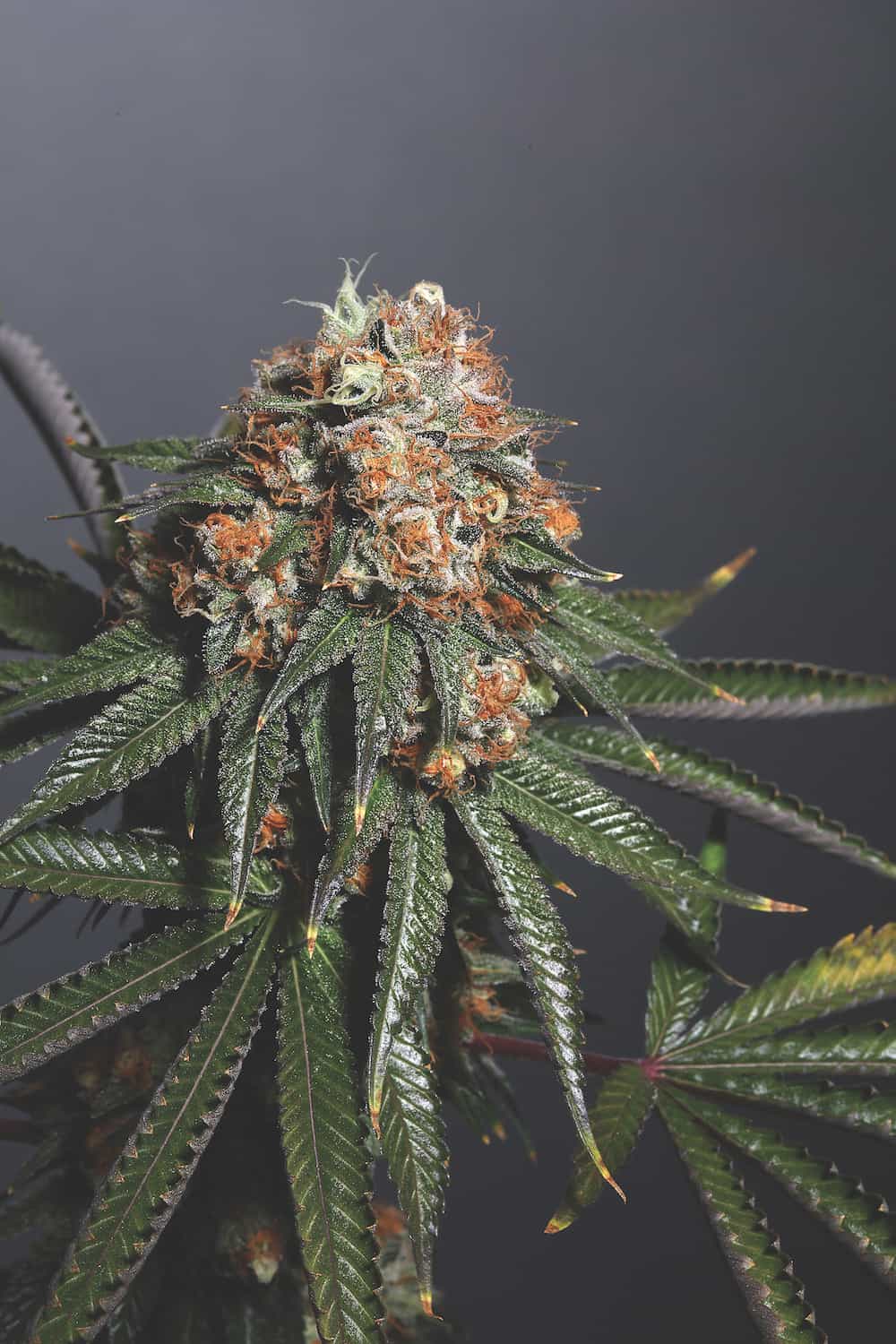
Sour Diesel has one of the most prolific terpene profiles of any strain; Kent Sea (2), Justin Cannabis
Beta-Caryophyllene
Perhaps the most common terpene, beta-caryophyllene (or just caryophyllene, as it is commonly known) is present in eight out of 10 strains and has a woody, sweet, dry clove aroma. It has a spicy, almost peppery taste with hints of camphor and citrus in the background. It is a major terpene found in black pepper, clove, cotton and, in smaller amounts, green, leafy vegetables. Caryophyllene oil is an essential oil used to enhance tobacco flavor.
As previously mentioned, caryophyllene played a major role in Dr. Russo’s 2011 British Journal of Pharmacology paper on the entourage effect due to its ability to bind directly to the peripheral cannabinoid receptor CB2. That, in and of itself, is endlessly intriguing. And because of that fact, caryophyllene shows promise in salves or lotions as a therapeutic compound for inflammatory conditions and autoimmune disorders. It does not, however, seem to be involved in mood change or have other psychoactive aspects. Lastly, and sadly, caryophyllene oxide has the distinction of being the component responsible for cannabis identification by drug-sniffing dogs.
Beta-Myrcene
Another very prominent terpene found in most cannabis strains, beta-myrcene (or myrcene) was once thought of as a predominantly indica terpene due to the types of effects it elicits. However, with the recent wave of research in terpenes and strain chemotypes, it was found that myrcene is equally common in both sativa and indica varieties, casting further doubt on our taxonomical classification system of cannabis’s three species.
When it comes to the interactions with cannabinoids, myrcene can be described as a “synergist” of THC, meaning that when the two molecules combine in the body a stronger experience is created than with just THC alone. Because myrcene affects the permeability of the cell membranes, it allows more THC to reach brain cells as well as increases the absorption of other terpenes. High doses of myrcene were shown to induce sleep in mice during lab trials, and this sedative activity is likely why hops and lemongrass have been used as therapeutic sedatives in herbal healing for centuries. This is also why hoppy beers as well as myrcene-dominant indicas are famously known for their “body buzz” and “couchlock” effects.
D-Limonene
Limonene is one of the most popular cannabis terpenes, mostly due to its intense citrus aroma and sweet but potent lemon-lime flavor. In certain lab experiments, it has been shown to combat and destroy breast cancer cells as well as pathogenic bacteria. Limonene’s molecular structure helps it to facilitate its effects by quickly permeating the blood-brain barrier. When present with THC, this effect can aid in the cannabinoid more readily binding to CB1 receptors in the brain. Limonene has also been reported to increase alertness and restlessness in lab tests involving mice. Limonene is found in larger quantities in Chem, OG and Sour Diesel strains.
Alpha-Pinene and Beta-Pinene
These are the two chemical structures of pinene found in nature. Pinene is used medically in expectorants and topical antiseptics. Like limonene, pinene also easily crosses the blood-brain barrier, where it helps block chemical activity that normally destroys information-transfer molecules, thus facilitating better memory and leading to suggestions that pinene might have an application in the clinical treatment of Alzheimer’s disease. Pinene is also a known bronchodilator, allowing for larger inhalations, which can help those with asthma.
Linalool
Linalool is a component of several sedating essential oils, including lavender oil, which is believed to possess antianxiety and sedative properties. In clinical tests on humans who inhaled linalool, the terpene caused severe sedation. In similar tests on lab rats, it reduced the rodents’ motility by nearly 75 percent.
While linalool’s synergistic effects alongside cannabinoids are still being investigated, the hope is that linalool might help in the treatment of several types of cancer due to its effective medicinal properties. It is also a well-known antidepressant, as it amplifies serotonin-receptor transmission. In addition to being a compound that can mediate stress, linalool is also a strong anticonvulsant and may be particularly beneficial for topical applications, specifically healing acne and skin burns without scarring.
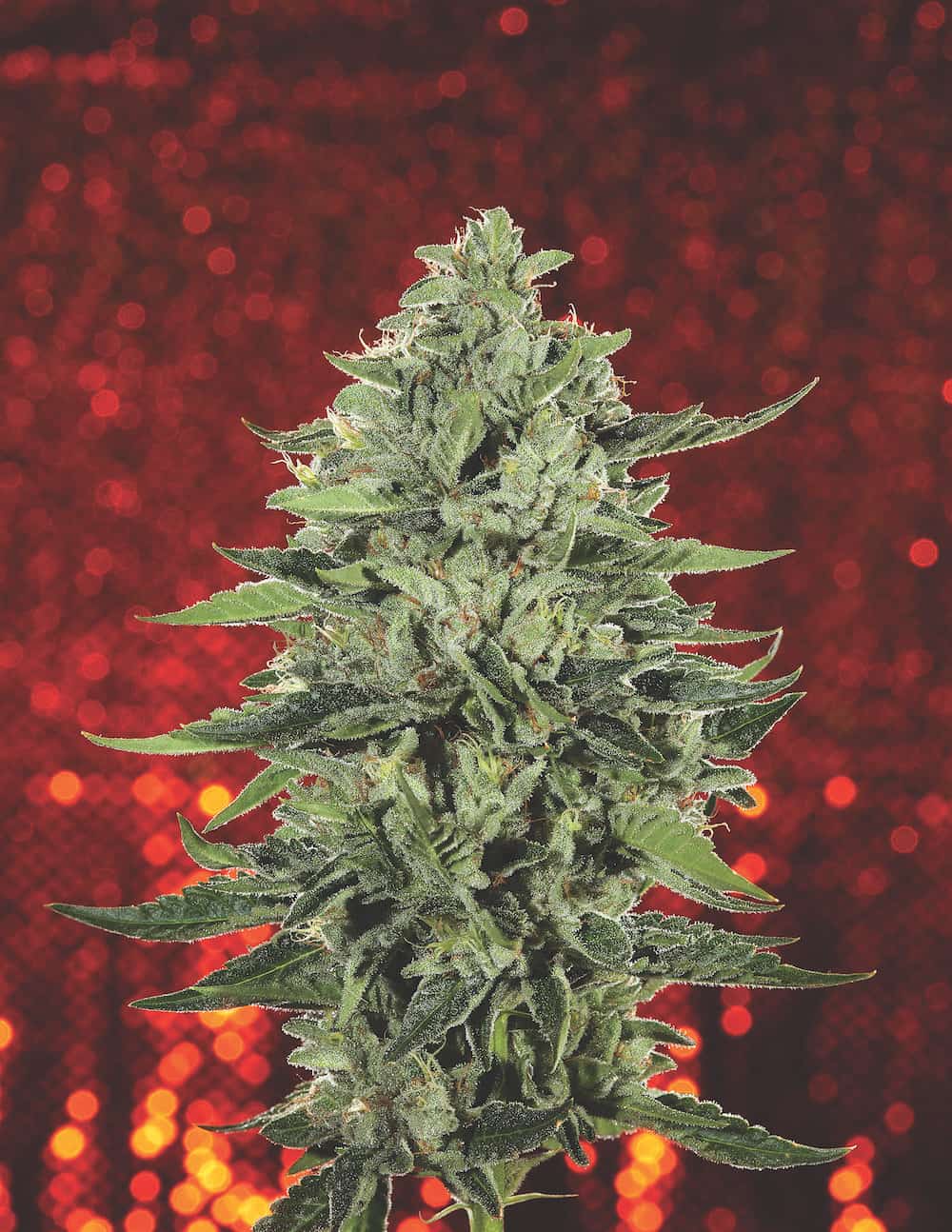
OG Kush contains limonene, humulene, camphene and more; Kent Sea (2), Justin Cannabis
In the End
We now know that there are many chemical compounds in marijuana, including cannabinoids, terpenes and flavonoids. Most of these compounds carry with them specific medicinal attributes, often combining with each other to create a holistic “entourage effect” such that the medicinal impact of the entire plant is actually greater than the sum of its parts.
Dr. Russo’s research indicates that cannabinoid-terpenoid interactions “could produce synergy with respect to treatment of pain, inflammation, depression, anxiety, addiction, epilepsy, cancer, fungal, and bacterial infections.” Additionally, we know that terpenes, just like cannabinoids such as CBD, can buffer THC’s psychoactive effects. Conversely, we also know that certain terpenes can aid or strengthen the effects of THC. The questions now are: What exactly are the combined effects that we want to create and elicit from this plant? How do we want to create and administer these medicinal compounds? And, most importantly, when will our federal government wake up to this news and end cannabis prohibition so that research like Dr. Russo’s and Dr. Mechoulam’s can be conducted at universities and research institutes within our own country’s borders?
The science is there and much has been proven. We have won many battles, but the war will not end until the ignorance and stubbornness abates. It appears we still have a long way to go. It’s time to raise the stakes once again, and science is our biggest ally.
This feature has been published in High Times magazine. Subscribe right here.
The post The Truth About Terps appeared first on High Times.

